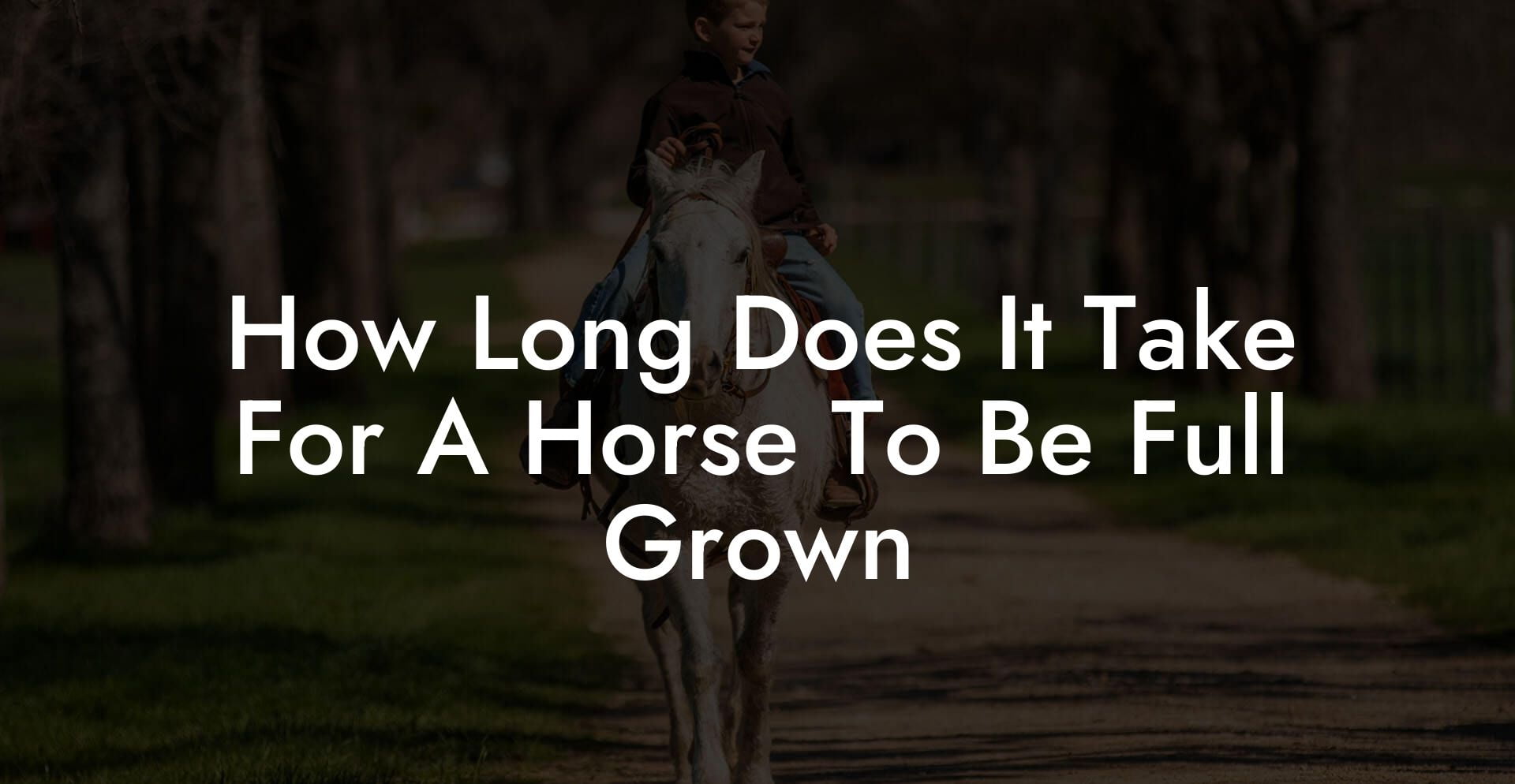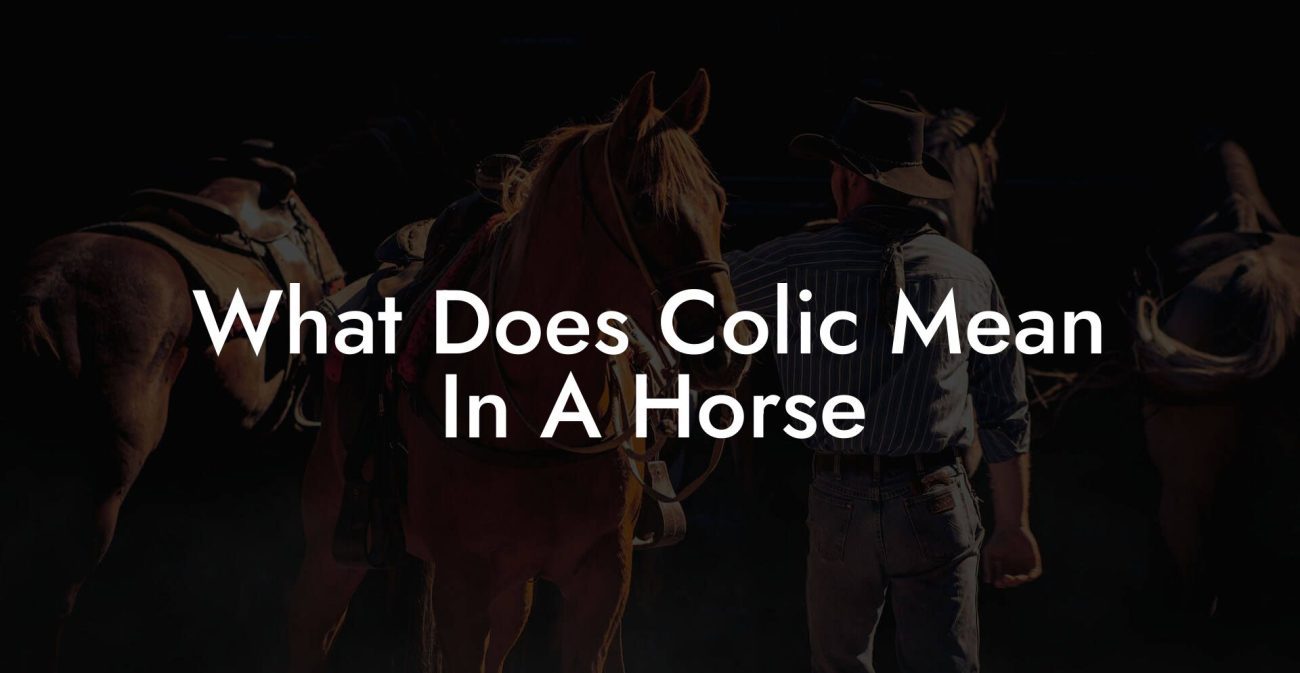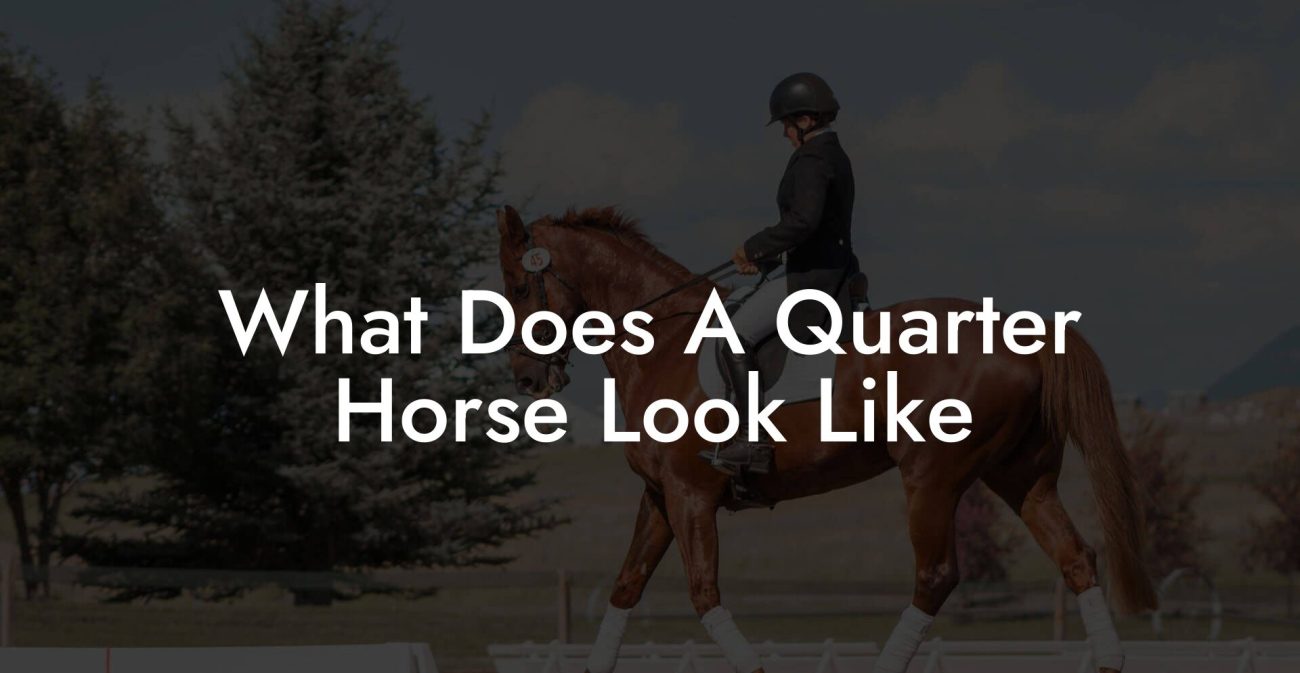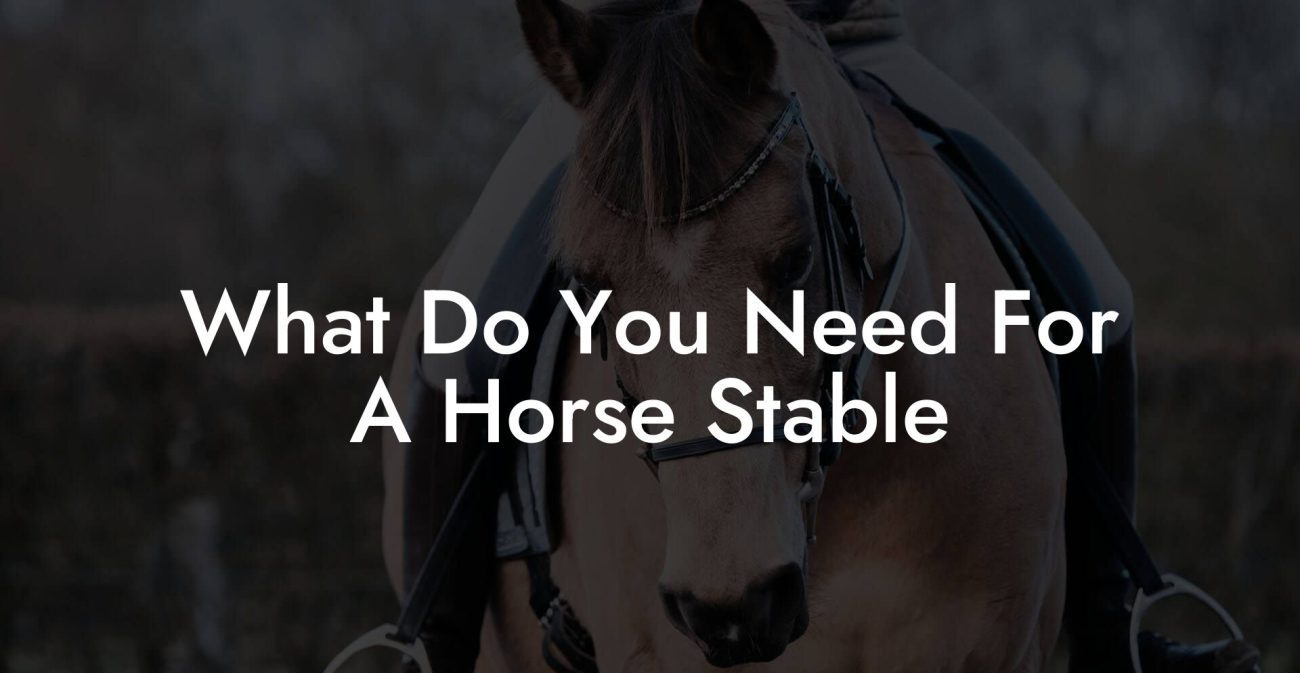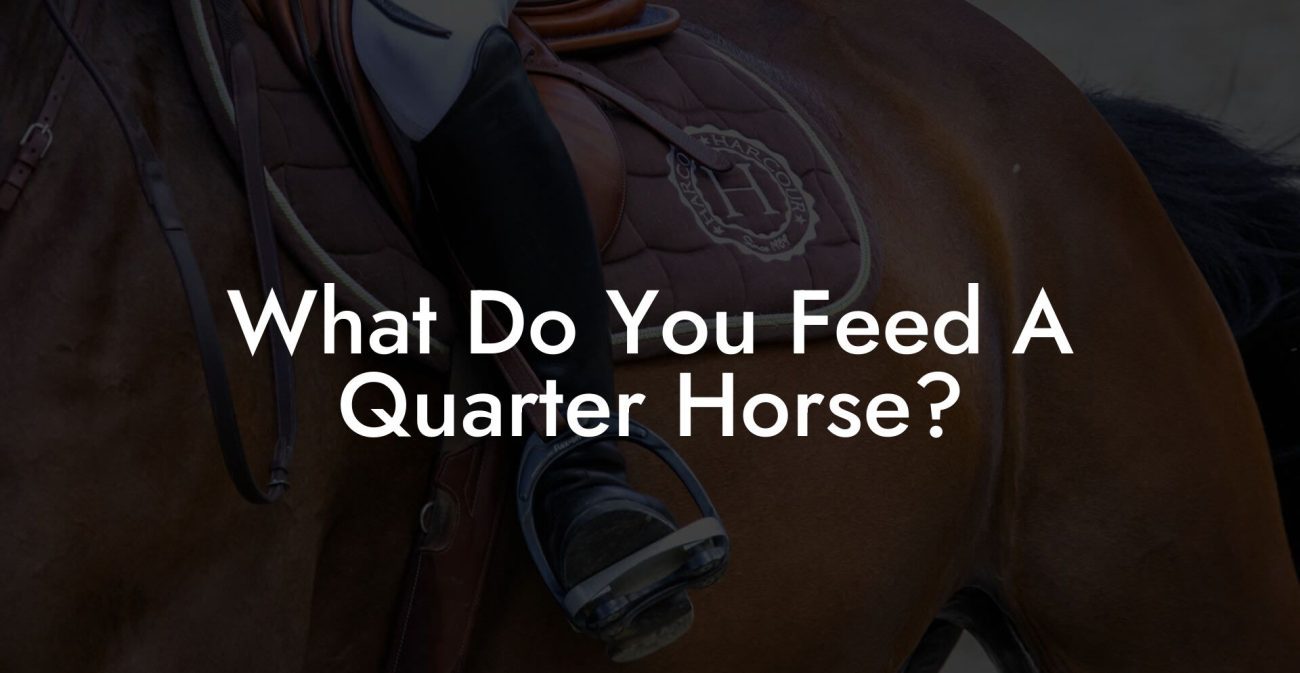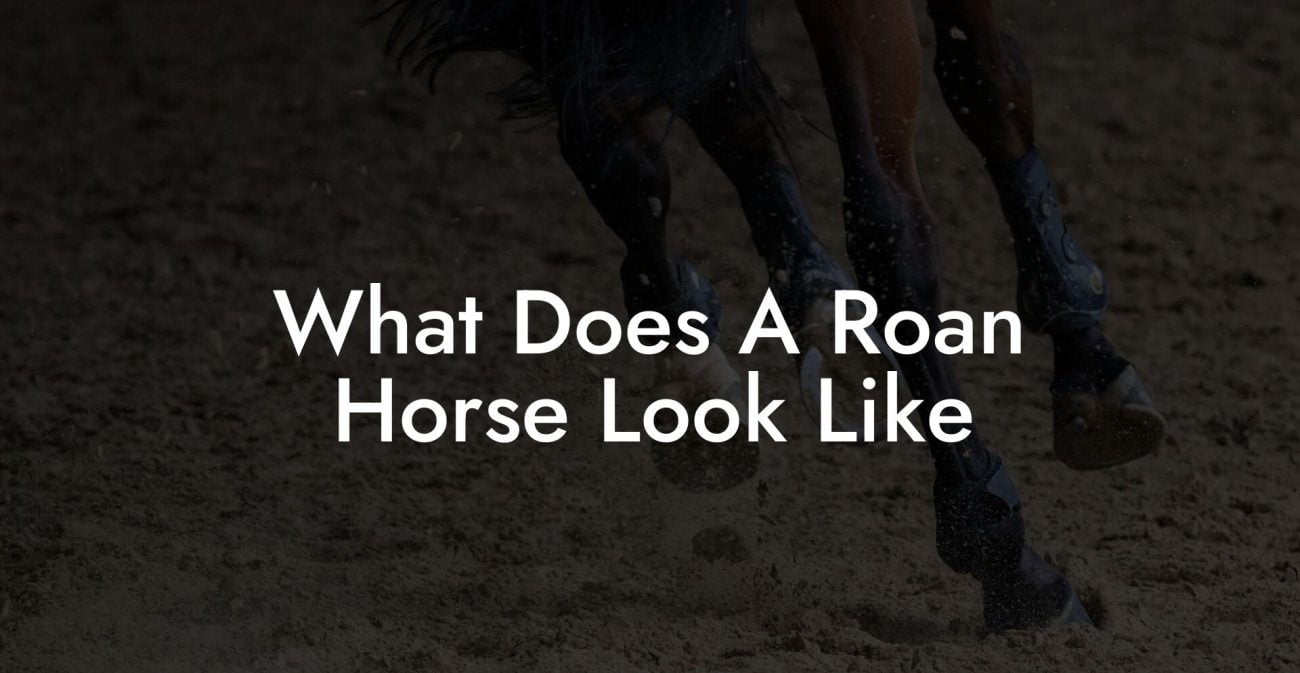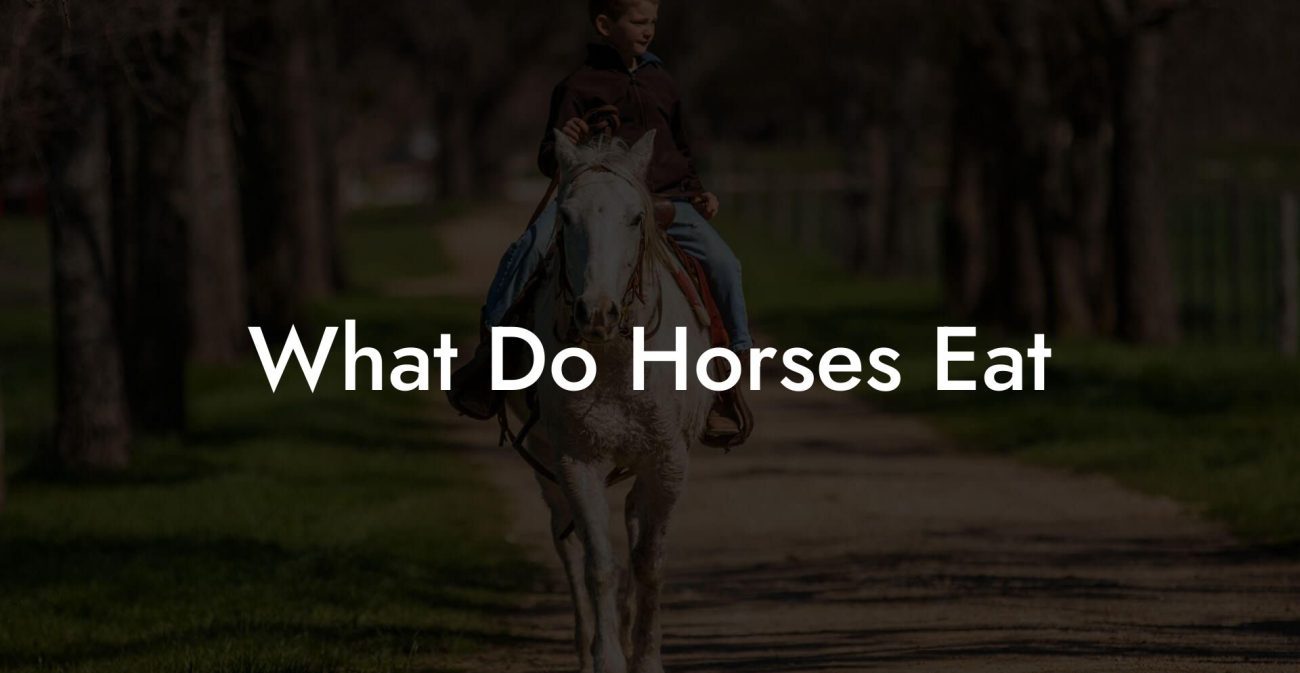Ever wondered if your equine companion is still growing like your favorite plant in a time-lapse video? Buckle up, because the world of horse growth is as dynamic and unpredictable as a viral TikTok trend. In this in-depth exploration, we dive into the ins and outs of how long it takes for a horse to be full grown, uncovering the mysteries behind equine development, optimal care techniques, and the must-know growth milestones that every horse lover should bookmark. Whether you're a Gen-Z equestrian enthusiast or a millennial horse caretaker, get ready for a wild ride through science, nutrition, exercise, and a bit of horse lore that will leave you both informed and entertained.
Quick Links to Useful Sections
- Understanding Horse Growth: More Than Just Reaching Full Size
- The Science Behind Equine Growth Milestones
- Key Factors Influencing Equine Growth
- Stages of Equine Development: The Ultimate Growth Guide
- Stage 1: The Foal Phase
- Stage 2: The Yearling Phase
- Stage 3: Adolescence
- Stage 4: The Young Adult Phase
- Stage 5: Mature Adulthood
- Nutritional Essentials: Fueling Your Horse’s Growth Journey
- Proper Care and Exercise: Shaping the Perfect Equine Athlete
- Monitoring Growth and Recognizing Milestones
- Common Myths and Misconceptions About Horse Growth
- Myth 1: All Horses Grow at the Same Rate
- Myth 2: Once a Horse Reaches Three Years, It’s Fully Grown
- Myth 3: Nutrition Doesn’t Affect Growth Much Once a Foal Is Weaned
- Myth 4: Exercise Can Accelerate Growth Indefinitely
- Contributing Factors to Optimal Equine Development
- Resources and Community Support: Your Next Steps
- Frequently Asked Questions on Equine Growth and Development
- Your Journey to a Fully Grown and Thriving Horse
Understanding Horse Growth: More Than Just Reaching Full Size
Horses aren’t just miniature versions of their adult selves waiting to outgrow their baby phase; their growth process is a fascinating journey that combines genetics, nutrition, physical activity, and environment. Just like a trending dance move evolving over time, a horse’s development is a series of well-coordinated stages, from the prancing, curious foal to a fully mature, confounding creature that sometimes still acts like a kid at heart.
There’s no one-size-fits-all answer to “How long does it take for a horse to be full grown?” because equine growth is influenced by factors such as breed, care, diet, and overall health. While most horses reach maturity between 4 to 6 years of age, some large breeds may take even longer to fully develop their frame and muscle structure. Understanding these nuances is key to providing your horse with the proper care and nutrition at each critical developmental milestone.
With the same excitement you’d reserve for following the latest social media challenge, let’s break down the secrets behind horse growth, demystify some common misconceptions, and equip you with the know-how to ensure your four-legged BFF lives its best, healthiest life.
The Science Behind Equine Growth Milestones
When it comes to the growth of horses, biology plays a starring role. Equine growth is a complex symphony orchestrated by hormones, genetics, and environmental cues. From the moment a foal takes its first wobbly steps, its body is geared up for rapid development, much like that burst of growth when your favorite influencer goes viral.
Hormones such as growth hormone and insulin-like growth factor 1 (IGF-1) are secreted during the early months of life, ramping up development. These hormones don’t just help your horse gain height and muscle; they also influence the maturation of bones, joints, and connective tissues. As your horse ages, the rate of growth slows, a bit like the dwindling excitement after the initial hype of a new gadget.
Scientific studies have delved into the intricacies of equine development, and while there are general timelines, individual variations abound. For instance, the breed of the horse can dictate whether it hits its growth spurt earlier or later than its peers. Light riding horses like Arabians may mature sooner, whereas sturdy draft breeds are often slow burners, requiring more time to reach their full stature.
In the upcoming sections, we will dissect these stages further, providing you with a detailed roadmap that demystifies when your horse is considered full grown and which interventions can help optimize their development through every milestone.
Key Factors Influencing Equine Growth
Just as your social media feed is packed with diverse content, a horse's development is influenced by a variety of factors that work together, or sometimes against each other, to shape its maturity. Here are some of the key elements that determine how long it takes for a horse to be fully grown:
- Genetics: The blueprint of your horse is written in its DNA. Genetic factors largely determine the ultimate size, structure, and body composition. If your horse hails from a lineage known for towering stature, chances are it might take a bit longer to fully mature.
- Breed Variations: Not all horses are created equal. Some breeds mature faster and are known for their early peak performance (think Thoroughbred racehorses), whereas others, like some draft breeds, have a more drawn-out growth trajectory.
- Nutrition: The food your horse eats is its fuel. A diet rich in high-quality forage, balanced grains, and necessary vitamins and minerals can accelerate healthy growth. Conversely, a lackluster diet can stunt development or lead to structural issues.
- Health and Veterinary Care: Regular check-ups, preventive care, and prompt treatment of illnesses are essential. Health issues during the growth phase can delay development, much like how skipping workouts can stall your personal fitness journey.
- Exercise and Physical Activity: Movement matters. Regular, low-impact exercise helps build strong muscles and joints. Over-exercising or under-exercising can both lead to health issues later on.
- Environmental Conditions: Where your horse lives, its stable conditions, pasture access, and climate, greatly affect its overall development. Stress from overcrowding, extreme temperatures, or poor shelter can impede growth.
Understanding these factors can empower you to make informed decisions about your horse’s care, ensuring that every phase of development is supported with the right balance of nutrition, exercise, and medical attention.
Stages of Equine Development: The Ultimate Growth Guide
Equine development is like a long-running series with distinct seasons, where each stage has its unique plot twists and character arcs. Let’s break down these stages so you can easily track when your horse is nearing its full-grown finale.
Stage 1: The Foal Phase
The journey begins the moment a foal enters the world. This stage lasts from birth until about 6-12 months of age and is characterized by rapid physical growth and boundless curiosity. Foals are learning everything, from how to stand and walk to exploring their surroundings with astonishing speed. Their diet starts with milk from their mother, transitioning gradually to solid foods.
During this period, it's crucial to monitor their health closely. Regular veterinary visits, vaccinations, and proper colostrum intake in the early hours of life set the foundation for what’s to come.
Stage 2: The Yearling Phase
Once your horse hits its first birthday, welcome to the yearling phase, a time that spans until about 18 months to 3 years of age. In this stage, the horse continues to bulk up and refine its motor skills. While growth is still pronounced, there is a gradual transition from baby fat to lean muscle development.
Yearlings are a bit like teenagers: they’re growing fast, sometimes a bit awkward, but full of potential. It’s an optimal time to introduce light training and ensure they develop a healthy appetite, good posture, and a strong musculoskeletal system.
Stage 3: Adolescence
Adolescence for horses, spanning roughly 3 to 4 years of age, is somewhat akin to a growth spurt mixed with a phase of self-discovery. This period is critical for bone and joint development. While many concentrates on physical training begins here, it's also a time when careful management is necessary to avoid overtraining. Think of it as ensuring you don’t ruin your favorite smartphone by overusing it during its early years.
Training regimens during adolescence need to be carefully structured. Light to moderate exercise encourages proper muscular development without putting undue stress on the developing bones, which could lead to issues like joint problems or developmental orthopedic diseases.
Stage 4: The Young Adult Phase
By the time a horse reaches 4 to 6 years of age, it’s considered a young adult. This is when most horses are considered full grown, though they may continue to fill out and refine their muscle tone and overall physique. Their skeletal growth has mostly concluded, and they are ready to take on more rigorous training if needed. However, they still benefit from a balanced regimen of exercise, proper diet, and periodic vet check-ups.
In this phase, owners should focus on maintaining a healthy, active lifestyle for the horse, ensuring that it is not overworked, and that its training is appropriately advanced to match its maturity. The emphasis is on blending performance, longevity, and overall well-being in one well-rounded package.
Stage 5: Mature Adulthood
Beyond the young adult phase, horses enter mature adulthood, where training intensity and routines are adjusted based on their age and capability. Although their growth has long been completed, sustaining muscle mass, joint flexibility, and cardiovascular health becomes the focus of care. Regular, age-appropriate exercise and monitoring are crucial.
Every horse ages differently, and while some continue to perform at peak levels into their teens, others may need a more gentle approach as they get older. Recognizing and responding to the subtle signs of aging helps ensure that your horse enjoys a long, healthy, and active life well into its mature years.
Nutritional Essentials: Fueling Your Horse’s Growth Journey
Imagine trying to level up in your favorite video game without the right power-ups. For horses, diet is that all-important power-up. Proper nutrition plays a pivotal role in ensuring that your horse not only reaches full physical maturity but does so in a healthy, sustainable manner.
A balanced diet for a growing horse should include:
- High-Quality Forage: Grass and hay form the cornerstone of a horse’s diet, providing essential fiber necessary for digestive health.
- Grains and Concentrates: These provide the extra calories needed for growth, especially during periods of high energy expenditure. However, moderation is key!
- Vitamins and Minerals: Elements such as calcium, phosphorus, and trace minerals are essential for the development of strong bones and muscle tissues. Your vet can guide you on the right supplementation if needed.
- Water: Hydration is non-negotiable. Clean, fresh water available at all times ensures that your horse’s bodily functions and nutrient absorption processes perform at their peak.
Tailor the feeding routine to your horse’s stage of growth. Foals and yearlings have different dietary requirements compared to a mature adult. Consult with an equine nutritionist if you're ever in doubt, think of them as your personal horse diet coach, ensuring every meal is a step toward peak health.
Moreover, the feeding schedule can be an opportunity to experiment with innovative feed formulations and supplements that promote joint health and muscle development. By balancing protein, energy, and micronutrients, you can set your horse on a trajectory that mirrors the perfect algorithm for growth.
Proper Care and Exercise: Shaping the Perfect Equine Athlete
Care and exercise are the dynamic duo that ensures your horse’s growth isn’t just about getting bigger but growing robust and agile. Think of it as cross-training combined with self-care, just as you wouldn’t skip leg day, your horse’s activities need to be well-rounded, engaging, and age-appropriate.
During the early stages, gentle physical activity helps promote healthy muscle development and coordination. As your horse matures, structured workouts can be gradually introduced to fine-tune its strength, balance, and endurance. Here are some key exercise considerations:
- Regular Movement: Ensure your horse enjoys regular turnout time. Movement not only stimulates muscle development but also provides much-needed mental stimulation.
- Structured Training: Incorporate consistent, low-impact exercises that focus on core strength, flexibility, and cardiovascular health. Activities like light trotting, hill work, and controlled cantering are excellent ways to build a solid foundation.
- Rest and Recovery: Over-exercising can be just as detrimental as neglecting physical activity. Allow ample downtime and monitor for signs of fatigue or overuse injuries.
- Adaptability: Adjust the intensity of physical activity according to the developmental stage of the horse. Adolescents, for instance, require careful exercise moderation to prevent stress on still-developing joints.
Integrating a regimen of proper care and exercise isn’t just about meeting physical milestones; it’s about fostering an environment where your horse can thrive mentally, emotionally, and physically. A well-exercised horse is a happy horse, one that’s poised to take on the world with the same verve you’d expect from a trending fitness influencer.
Monitoring Growth and Recognizing Milestones
Keeping tabs on your horse’s progress as it grows is a lot like tracking your favorite playlist’s evolving beats, there are key moments that indicate major transitions. Monitoring its development not only helps you detect any potential issues early on but also reinforces the wins, from the first unsteady steps to the confident gallop of a young adult.
Here are several strategies to effectively monitor growth:
- Regular Vet Check-ups: Scheduled assessments ensure that any growth abnormalities or health concerns are addressed promptly. Routine x-rays, blood tests, and physical examinations are all part of the package.
- Body Measurements: Keep track of height, weight, and circumference at the withers. These measurable indices offer insight into whether your horse’s growth is on track.
- Photographic Timeline: Snap regular photos of your horse. Visual comparisons over time can be incredibly rewarding and revealing.
- Behavioral Observations: Changes in energy levels, appetite, or temperament can indicate shifts in health status. An alert owner is often the first to notice subtle changes that might otherwise go undiscussed.
By staying vigilant about these markers, you can ensure that your horse is developing normally and that any interventions, whether dietary adjustments, modified exercise routines, or medical care, are implemented promptly. Remember, a well-monitored growth journey is the best way to guarantee a smooth transition to full maturity.
Common Myths and Misconceptions About Horse Growth
Just like the latest internet rumors, there are plenty of myths swirling around about how long it takes for a horse to be full grown. It’s time to debunk these misconceptions and set the record straight.
Myth 1: All Horses Grow at the Same Rate
False! Just as no two viral trends are exactly alike, each horse grows at its own pace. Breed, genetics, and individual health can create significant variations in growth timelines.
Myth 2: Once a Horse Reaches Three Years, It’s Fully Grown
Not quite. While many horses experience a significant phase of development by three years old, most won’t reach full physical maturity until between 4 to 6 years, sometimes longer for larger breeds.
Myth 3: Nutrition Doesn’t Affect Growth Much Once a Foal Is Weaned
Incorrect. Good nutrition is essential at every stage of a horse’s life. Even in later stages, diet plays a critical role in maintaining muscle tone, joint health, and overall vitality.
Myth 4: Exercise Can Accelerate Growth Indefinitely
Exercise is beneficial, but overdoing it won’t magically shorten your horse’s developmental timeline. It’s all about balance; proper, age-tailored activity can help ensure optimal growth, but there’s no shortcut to a healthy timeline.
Addressing these myths not only clarifies common misunderstandings but also reinforces the importance of individualized care tailored to your horse’s unique growth pattern.
Contributing Factors to Optimal Equine Development
Beyond the obvious ingredients of nutrition and exercise, a myriad of factors contributes to ensuring that your horse reaches its full grown potential in the healthiest manner possible. Let’s break down these elements:
- Genetic Lineage: A horse’s genetic makeup affects its final height, muscle composition, and overall body structure. Breeders invest years in studying bloodlines to predict growth patterns and performance potential.
- Proper Housing and Pasture Management: Clean stables, safe fencing, and ample space to roam all contribute to reduced stress and improved physical development. A calm environment supports better sleep quality and lower stress hormone levels, which in turn benefits growth.
- Regular Healthcare: Preventive medicine, regular deworming, vaccinations, and dental care all play a pivotal role in a horse’s ability to absorb nutrients and remain active.
- Environmental Enrichment: Mental stimulation and a varied environment help reduce boredom and stress, promoting better overall health. Social interactions with other horses can also have a positive impact on growth and development.
- Consistent Routines: Horses thrive on routine. Regular feeding times, consistent exercise schedules, and predictable social interactions contribute to a stable, stress-free environment that supports growth.
Incorporating these factors into your horse care routine transforms daily management into a holistic growth strategy. The result is a happier, healthier horse that grows at its natural pace while reaping the benefits of a supportive environment.
Resources and Community Support: Your Next Steps
Achieving excellence in horse care is a community-driven affair. Whether you’re looking for expert advice or passionate peer support, numerous resources are at your fingertips.
Here are some key resources and ways to connect with like-minded horse enthusiasts:
- Local Equine Veterinarians and Nutritionists: These professionals provide hands-on assessments and tailored recommendations to help your horse thrive.
- Equine Forums and Social Media Groups: Platforms like Facebook groups, Reddit communities, and Instagram pages dedicated to horse care offer real-time advice, success stories, and troubleshooting tips from fellow horse owners.
- Online Courses and Webinars: Many websites and equine centers offer educational resources that cover everything from nutrition to training methods, providing you with expert guidance at your convenience.
- Local Riding Clubs and Events: These gatherings are excellent for making personal connections, receiving recommendations from experienced riders, and even swapping tales (or memes) about the trials and triumphs of horse care.
- Trusted Equine Publications: Magazines, blogs, and research journals dedicated to equine health and development provide in-depth articles and the latest findings in the field.
Embrace these resources as stepping stones on your journey to becoming a more knowledgeable and empowered horse caregiver. Each piece of advice, every shared experience, and active community engagement lays the groundwork for your horse to reach and maintain its optimum potential.
Frequently Asked Questions on Equine Growth and Development
We know you have questions, and we’re here to help. Here’s a deep dive into some of the most common queries regarding how long it takes for a horse to be full grown, the factors that influence their growth, and key care strategies to support your equine friend.
1. How many years does it typically take for a horse to be fully grown?
Most horses reach full skeletal maturity between 4 to 6 years of age. However, the exact timeline can vary depending on breed, genetics, and overall care. Larger breeds may take slightly longer to develop fully.
2. What are the main factors that affect equine growth?
Genetics, breed, nutrition, exercise, environment, and overall health all play significant roles in a horse’s growth and development. Regular veterinary care and a balanced diet are key.
3. Can I speed up my horse’s growth through better nutrition?
While quality nutrition is essential for healthy growth, there is no safe, proven method to drastically speed up the natural developmental timeline. It’s important to provide balanced meals that meet the horse’s specific growth needs.
4. What are the best exercise practices for a growing horse?
Focus on low-impact, age-appropriate exercises that build strength and flexibility without over-stressing the developing joints. Regular turnout, light trotting, and controlled training sessions are recommended.
5. How can I tell if my horse is developing normally?
Regular vet check-ups, routine measurements of height and weight, monitoring behavior, and keeping a photographic timeline can help you track your horse’s growth and detect any anomalies early.
6. Are there any common myths about horse growth?
Yes, common myths include ideas such as all horses growing at the same rate or that a horse is fully grown by three years old. In reality, growth rates vary, and most horses continue developing until around 4 to 6 years of age.
7. How do environmental factors influence a horse’s growth?
Environmental factors such as stable conditions, pasture quality, climate, and overall stress levels can impact how effectively your horse grows. A positive, enriched environment promotes healthier development.
8. What role does genetics play in determining growth?
Genetics largely set the blueprint for a horse’s ultimate size, structure, and maturation timeline. Horses from well-documented lineages with a history of rapid or extended growth will often follow that trend.
9. Can regular health monitoring ensure proper development?
Absolutely. Consistent veterinary care, routine body measurements, and careful observation of behavior are key components in ensuring that your horse’s growth is proceeding normally.
10. Is there any specific age when training should be intensified?
Training should be gradually intensified during the adolescence phase (around 3 to 4 years), but it must always be balanced with rest and tailored to avoid overuse injuries.
Your Journey to a Fully Grown and Thriving Horse
The journey to full maturity is as unique and intricate as the hairstyle of a true Gen-Z icon. By understanding how long it takes for a horse to be full grown, you’re not just tracking numbers, you’re embracing the dynamic interplay of biology, nutrition, exercise, and love that makes your equine companion truly remarkable.
Every stage of growth, from the playful antics of a foal to the confident stride of a mature horse, presents opportunities for connection, learning, and celebration. With informed care, a supportive community, and a holistic approach to health, your horse will not only grow, it will thrive.
Remember, your role as a caretaker is both an art and a science. Celebrate each milestone, no matter how small. From those first unsteady steps to that exhilarating first full gallop, every moment is a victory. By staying updated on the latest nutrition tips, exercise strategies, and veterinary advances, you’re ensuring that your journey together is as joyful and vibrant as your favorite meme.
Whether you’re attending local equine events, joining online forums, or simply enjoying the quiet moments in the pasture, your commitment to your horse’s well-being is a lifelong adventure. Embrace the challenge, share the laughter, and watch as your four-legged friend blossoms into a beacon of health and vitality.
Your equine journey is a testament to the fact that growth is not just measured in years, but in the moments of connection, dedication, and care. So, saddle up and enjoy every step of the ride, because a thriving, full grown horse is a masterpiece in motion, and you’re the curator of its success.

